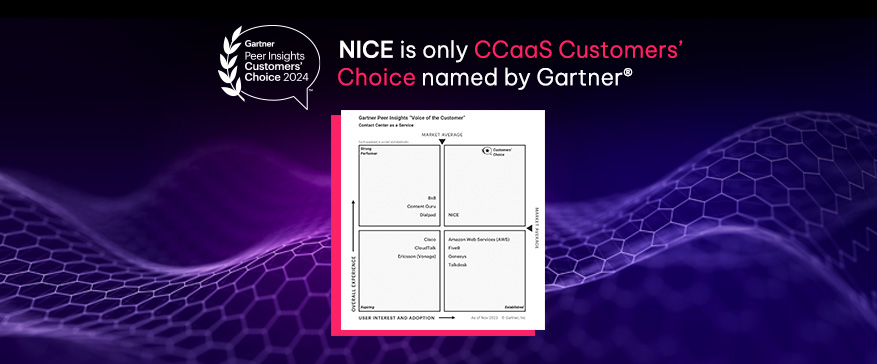What is IVR for Call Centers?
Interactive Voice Response (IVR) is a transformative technology for call centers, automating and streamlining customer interactions. Through call center IVR systems, callers can navigate voice prompts or use touch-tone inputs to access information or complete tasks without needing human intervention.
IVR systems offer a multitude of benefits to call centers. They enhance efficiency by directing calls to the appropriate department or agent, reducing hold times and customer frustration. Additionally, IVR systems allow call centers to handle a high volume of calls simultaneously, ensuring prompt service. IVR also provides self-service options, such as balance inquiries or bill payments, empowering customers to obtain information or perform tasks at their convenience.
Continue reading to discover more about the key features of IVR systems, best practices for implementing IVR in call centers, common challenges in IVR implementation, and future trends in IVR technology.
How IVR Systems Benefit Call Centers and Improve Customer Satisfaction
Interactive Voice Response (IVR) systems bring numerous advantages to call centers. These automated phone systems interact with callers through pre-recorded prompts and route them to the appropriate department or agent. IVR systems can handle customer interactions during and after business hours, ensuring 24/7 customer service availability. Let’s delve into how IVR systems can elevate call center operations.
One significant benefit of IVR systems is improved call routing and efficiency. Callers navigate through menu options using voice recognition technology, reaching the right department without human intervention. This reduces the time spent on call transfers and enhances overall call handling efficiency in a contact center.
IVR systems also offer advanced customer self-service options. Callers can access FAQs, account information, or perform simple tasks like balance inquiries or bill payments through the automated system. This empowers customers to find answers or complete transactions swiftly and conveniently, without waiting for a live agent. Additionally, IVR systems can handle customer queries efficiently, providing personalized experiences and reducing wait times.
Moreover, IVR systems help reduce wait times for inbound calls, which boosts customer satisfaction. By efficiently routing calls and providing self-service options, IVR systems minimize the number of callers in queues, saving time and reducing frustration.
Implementing an IVR system can significantly enhance call center operations by improving call routing and efficiency, offering self-service options, and reducing wait times. Well-designed IVR menu options are crucial for efficient call routing, ensuring that customers move through the system with ease and reach the most suitable agent. These benefits enable call centers to streamline processes, enhance customer satisfaction, and deliver a superior overall customer experience.
Key Features of IVR Systems
Interactive voice response systems are indispensable tools for call centers, offering various key features that enhance the customer experience. Let’s explore some of the most crucial features of IVR systems:
1. Automated Voice Prompts and Menus: IVR systems use automated voice prompts and menus to guide callers through their options. This feature enables callers to navigate the system easily and efficiently, minimizing the need for human intervention and reducing wait times.
2. Integration with CRM Systems: IVR systems can be seamlessly integrated with Customer Relationship Management (CRM) systems. This integration allows call centers to access customer information quickly, providing agents with relevant data before they answer the call. IVR software plays a crucial role in this integration, ensuring that customer data is processed and utilized effectively. This feature enhances the overall customer experience and boosts agent productivity.
3. Call Analytics and Reporting Capabilities: IVR systems offer robust call analytics and reporting capabilities. This feature enables call centers to gather valuable data on call volumes, durations, customer interactions, and more. With this data, call centers can make informed decisions, optimize call routing strategies, and continually improve their operations. Additionally, IVR systems can handle incoming calls efficiently by automating customer support and providing self-service options.
At Nice.com, we understand the importance of these key features in IVR systems. Our IVR solutions are designed to provide call centers with cutting-edge technology and seamless integration capabilities. Contact us today to learn how our IVR systems can optimize your call center operations.
Best Practices for Implementing IVR in Call Centers
Implementing Interactive Voice Response (IVR) systems in contact centers and call centers can significantly enhance customer service and efficiency. To ensure successful implementation, follow these best practices: design intuitive and user-friendly IVR menus, personalize IVR interactions, and regularly update and test IVR scripts.
Designing intuitive and user-friendly IVR menus is crucial for a positive customer experience. A well-structured IVR menu should have clear options, concise prompts, and straightforward language. By organizing menu options logically and avoiding complex jargon, callers can navigate the IVR system effortlessly, reducing frustration and call abandonment rates.
Personalizing IVR interactions can greatly improve customer satisfaction. By utilizing customer data and integrating it into the IVR system, callers can be greeted with personalized messages and routed to the most appropriate agents or departments. This personal touch creates a tailored experience, making customers feel valued and understood.
Regularly updating and testing IVR scripts is essential to maintain effectiveness and efficiency. Call centers should frequently review and update IVR scripts to ensure accuracy and relevance. Testing the IVR system from a customer’s perspective helps identify issues or areas for improvement. By continually refining the IVR scripts, call centers can optimize call routing, reduce wait times, and deliver a seamless customer experience.
Common Challenges in IVR Implementation
Implementing an Interactive Voice Response (IVR) system in call centers can bring many benefits, such as enhanced customer service and increased efficiency. However, several common challenges may arise during the IVR implementation process.
One challenge is balancing automation with human assistance. While automation streamlines processes and reduces costs, it’s essential to ensure customers can still connect with a live agent when needed. A well-designed IVR system should provide a seamless transition between self-service options and human support, giving callers the flexibility they desire.
Avoiding lengthy and complex IVR menus is another crucial challenge. Customers value their time and seek quick resolutions to their inquiries. Lengthy and convoluted IVR menus can lead to frustration and abandonment. By keeping menus concise and logical, organizations can enhance the customer experience and reduce call duration.
Ensuring that IVR language and prompts are clear and understandable is also vital. Using jargon, technical terms, or complex language can confuse callers and hinder their ability to navigate the system effectively. IVR prompts should be concise, using simple and natural language that matches the caller’s expectations.
At NICE, we recognize these challenges and offer a comprehensive IVR solution that addresses them. Our user-friendly IVR system strikes the right balance between automation and human assistance, ensuring a seamless customer experience. With intuitive menus and clear prompts, our IVR solution helps organizations reduce call duration and enhance customer satisfaction.
Future Trends in IVR Technology
As call centers evolve, so does the technology supporting them. One significant trend in Interactive Voice Response (IVR) technology is the integration of Artificial Intelligence (AI) and natural language processing.
With AI and natural language processing, IVR systems are becoming smarter and more intuitive. These systems can understand and interpret human speech, allowing callers to interact with the system using natural language instead of navigating through menus and pressing buttons. This not only enhances the user experience but also reduces call handling time and improves customer satisfaction.
Another emerging trend is the integration of IVR with chatbots and virtual assistants. By combining these technologies, call centers can provide a seamless and personalized customer experience. Chatbots and virtual assistants can handle basic inquiries and tasks, freeing up human agents to focus on more complex issues. This integration also enables a consistent and cohesive customer experience across different channels, such as phone, chat, and social media.
Furthermore, IVR technology is now leveraging customer data analysis to enhance personalization. By analyzing customer data, IVR systems can route calls to the most appropriate agent based on the caller’s history, preferences, and previous interactions. This level of personalization not only improves efficiency but also strengthens customer relationships and loyalty.







